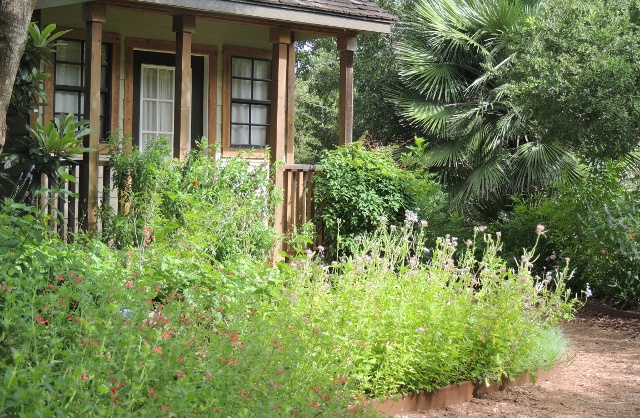Sketch a loose design before selecting plants. And if specific plants absolutely must make an appearance, design the space with these plants in mind.
Personal Style and House Style
Know Thyself
Think about what you like.
Go ahead and find inspiration in your neighbors’ yards, in public gardens and in magazines. Straight lines and classic symmetry? Flowing, curvy beds and an informal cottage feel? The choice is yours. I like structure with plants bursting out and overflowing the metal-edged beds.
Decide how you want to use your garden.
Do you want an area for kids to tumble in green grass? Maybe you want an arbor for a serene getaway. If you have the space, divide your yard into activity—or nonactivity—areas.
Point of view.
Think about where you will spend the most time in your yard and create a focus. This can be as simple as a birdbath or as monumental as a gnarly, old oak tree.
Go big with beds.
Water-smart yards have less grass. Be brave. Make garden beds king-sized, big enough to occupy 30 to 40 percent of the yard. Life will be easier and cheaper with less work, fewer chemicals and less water. Not a bad deal.
Picking the Plants
Here Comes the Sun—or Not
A shy, shade-tolerant fern might not be happy in the scorching sun, whereas a lantana will ask for even more sun. Make your plants happy by giving them the growing conditions they like. Pick plants that thrive in your area and in the light and soil conditions of your yard. Micromanaging your design up front makes life much easier later on. Check the Lady Bird Johnson Wildflower Center’s website for details on native plants’ ideal growing conditions.
Year In, Year Out
Select water-wise plants that offer year-round interest. Let your design reflect the passing of the seasons. Spring comes alive with the redbud’s magenta flowers on bare branches. Summer brings flowers. Then fall brings the seed heads of native grasses and datura’s spiny seed pods. Winter shows off yaupon berries. Enjoy the rhythm of the seasons with your garden’s cycle of waking, growing and then going to sleep.
Go for Color and Texture
Blooming flowers are the quick fix for a visually appealing garden. Use a variety of colors and textures for a stimulating palette. If you prefer a soothing, tranquil feel, you could use just blue and white. Variegated plants, with two-color leaves, work well in shade.
Along with color, the texture of leaves brings another element to a garden and creates enduring interest. Soft, fuzzy, gray lamb’s ears demand petting, but a prickly pear or pine, not so much.
Practice Your Scales
Vary size and shape of plants and flowers for visual interest. Play up tall vertical plants against mounding and flowing plants. Big leaves contrast with small leaves. Or do a strong horizontal planting of low plants or ground cover that is broken up by more vertical plantings.
Practice, Practice
Gardens are works in progress. Once you have the basic layout and structure, a garden lets you refine and revise as you desire. Don’t be afraid to experiment with plants and designs. Gardens are forgiving, and each year you will learn more by doing.
Have fun, and enjoy the many benefits of your water-wise garden.
—Suzi Sands

